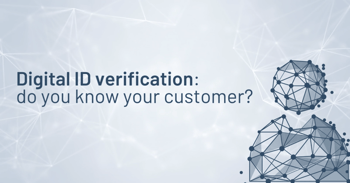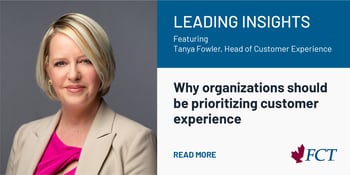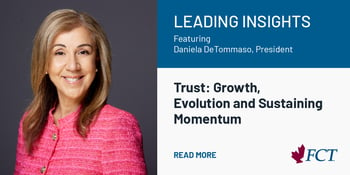
First impressions matter, and the initial interaction a customer has with an organization can have a lasting impact. However, creating an experience for that customer goes far beyond that first exchange.
While there is a common misconception that customer service and customer experience are interchangeable, they are vastly different. Customer service is represented by a single touch point between a customer and an employee while customer experience refers to the sum of every interaction with an organization.
To provide a positive customer experience, it’s important to follow the entire customer journey from start to finish, taking each interaction into account and eliciting feedback as often as possible. When organizations do this effectively, it benefits all parties involved. Customers will receive a more positive and tailored experience and organizations will simultaneously retain repeat customers and attract new ones as a result.
And the benefits don’t end there. In addition to the short-term advantages organizations yield, creating a great customer experience is also key to driving long-term business growth. And that, at the end of the day, is the ultimate goal.
How does experience go beyond first impressions?
A customer’s first interaction with a brand is usually speaking with an employee, either in person, online or over the phone. This interaction is an opportunity to provide a positive first impression through great customer service. However, customer experience goes far beyond this interaction.
For example, if a customer reaches out to an organization with an inquiry and the employee is helpful and kind, they have received great customer service. However, if the organization follows up with relevant information pertaining to the product or service the customer inquired about, checks in on satisfaction and/or offers additional advice or services that resolve a customer’s need or pain point – they’ve received a great experience.
How can organizations work to meet customer expectations and/or personalize their journey? And why should they?
Customer expectations and needs are at the core of customer experience and understanding both is essential to meeting them. One of the most effective ways to do this is by putting yourself in the customers’ shoes. This may sound simple but viewing the business from the external perspective of the customer is crucial, versus always viewing interactions through a business lens.
As a first step, organizations should establish a plan that begins with defining key aspects of the strategy. This includes creating a brand promise that details how solutions will be aligned to meet customers’ goals and communicating this to all employees. Once a framework is established, organizations can leverage their people, processes and technology to drive results.
There are many ways to achieve this, ranging from connecting with customers on an ongoing basis to eliciting feedback following each interaction. One of the most impactful ways to acknowledge and meet customer expectations, however, is personalization.
Creating a personalized experience involves all the seemingly small details in customer communications. This can include:
- Ensuring no emails are sent with “Dear Customer” instead of using the person’s name;
- Calling a customer directly to discuss specific feedback; and/or
- Tailoring a solution to meets a customer’s unique needs to ensure they feel heard and appreciated.
The purpose of personalization is to ensure the customer recognizes they are valued, and to ensure they understand that the organization is not only paying attention to their feedback and interactions but is actively responding and offering solutions or relevant information.
Is there a relationship between company culture and customer experience?
Employees are their organization’s biggest brand ambassadors, and are responsible for establishing a direct relationship between company culture and customer experience. As the primary point of contact in many cases, employees represent the first opportunity for the brand to build trust with the customer.
It’s important for employees to be passionate about the organization they work for, and aligned with its values, to ensure consistency in the customer’s experience. This can be achieved by conducting regular team meetings and individual check-ins with employees to help establish deeper connections with them and ensure they understand their role and the value it adds to the customer experience. Additionally, it is critical to share any customer insights or feedback and utilize meaningful and measurable metrics with employees, to ensure they feel empowered and motivated as the true owners of their experience delivery to achieve customer loyalty.
How can customer experience contribute to business growth?
A customer’s experience goes beyond the service they receive. It’s a holistic view of the organization they are interacting with and includes every encounter throughout that journey.
Delivering top-tier customer experience is important for every organization, no matter how or where they operate. Positive experiences can contribute directly to company growth, as they lead to both repeat and new customers, usually as a result of online reviews and/or word-of-mouth. This is why ongoing strategy evaluations are equally as important to ensure this is consistently delivered.
At FCT, customer experience is our bread and butter, and we understand the importance of being dependable and consistently providing solutions that solve our customer’s evolving needs. We also understand that opportunity lies in our ability to go above and beyond, and we’re proud to provide customers with extra care and support throughout their entire experience.
®Registered Trademark of First American Financial Corporation.







































-min-1.jpg?width=350&height=216&name=home-theft-tile-fraud-toronto-blog%20(3)-min-1.jpg)

-min.jpg?width=350&height=216&name=FCT-Leading-Insights-Michael-LeBlanc-ENG_blog%20(1)-min.jpg)










-min.jpg?width=350&height=216&name=errors-and-omissions-ontario-real-estate-law-risk-blog%20(1)-min.jpg)
-min.jpg?width=350&height=216&name=tanya-fowler-leading-insights-human-digital-innovation-blog%20(1)-min.jpg)























-min.jpg?width=350&height=216&name=Three-signs-your-clients...-Blog%20(1)-min.jpg)













.jpg?width=350&height=216&name=Blog-Post-EasyFund-2-Steps-min%20(1).jpg)


